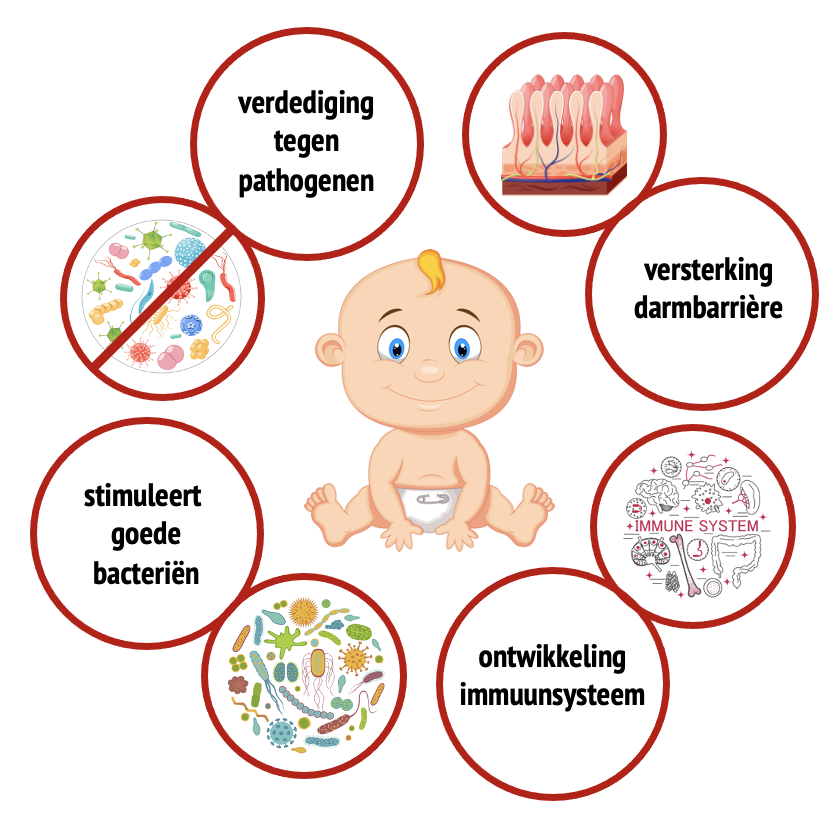Human Milk Oligosaccharides or HMOs are essential nutrients for babies. They are receiving increasing attention due to their effects on the healthy development of babies.
HMOs are the third largest solid component of breast milk after lactose and fat. They are complex carbohydrates that largely reach the colon intact. Breast milk contains more than 200 different HMOs, with the concentration being highest right after birth (20 grams per liter); even a year after birth, breast milk still contains 5 – 15 grams per liter of HMOs. Cow’s milk contains far fewer HMOs than breast milk (only 0.05 grams per liter).
The first 1000 days of our lives are of great importance for the development of a diverse, stable, and healthy microbiome. It is important to allow the right bacteria to colonize the intestines so that the chance of allergies and intestinal problems is reduced later in life.
One of the most common HMOs is 2′-Fucosyllactose or 2′-FL for short. This 2′-FL has a prebiotic effect and stimulates the growth of good bacteria such as Bifidus and Lactobacillus. In addition, 2 “-FL strengthens the protective mucous membrane in the intestines and can bind to pathogenic bacteria to prevent them from binding to the intestines. 2”-FL is also absorbed into the blood, where it has an anti-inflammatory effect and stimulates the development of the immune system.
The HMO composition of breast milk is partly determined by genetics and partly by lifestyle effects such as diet. A quarter of women lack the enzyme needed to make fucosylated HMOs like 2′-FL: 2′-fucosyltransferase (FUT2). This enzyme deficiency is genetically determined. With the breast milk test from LactaScreen, you can determine whether you produce this enzyme or not.
